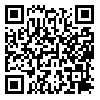Volume 3, Issue 4 (12-2012)
jdc 2012, 3(4): 187-193 |
Back to browse issues page
Download citation:
BibTeX | RIS | EndNote | Medlars | ProCite | Reference Manager | RefWorks
Send citation to:



BibTeX | RIS | EndNote | Medlars | ProCite | Reference Manager | RefWorks
Send citation to:
Layegh P, Javidi Z, Layegh P, Kiafar B, Shojaei Nouri S, Momenzadeh A. Comparison of free salivary testosterone versus free serum testosterone levels in patients with hirsutism and control group. jdc 2012; 3 (4) :187-193
URL: http://jdc.tums.ac.ir/article-1-5014-en.html
URL: http://jdc.tums.ac.ir/article-1-5014-en.html
Pouran Layegh * 
 1, Zari Javidi
1, Zari Javidi 
 , Parvin Layegh
, Parvin Layegh 
 , Bita Kiafar
, Bita Kiafar 
 , Saber Shojaei Nouri
, Saber Shojaei Nouri 
 , Akram Momenzadeh
, Akram Momenzadeh 


 1, Zari Javidi
1, Zari Javidi 
 , Parvin Layegh
, Parvin Layegh 
 , Bita Kiafar
, Bita Kiafar 
 , Saber Shojaei Nouri
, Saber Shojaei Nouri 
 , Akram Momenzadeh
, Akram Momenzadeh 

1- , layeghpo@mums.ac.ir
Abstract: (9018 Views)
Background and Aim: Hirsutism is defined as male pattern hair growth in females which affects 10% of women. Our aim was to compare free salivary and free serum testosterone levels in women with hirsutism and healthy controls.
Methods: This study was a case-control study in which 30 hirsute women in child bearing age were recruited and compared with 10 healthy controls. For each patient, a questionnaire containing demographic, clinical and laboratory information was completed. The salivary and serum total and free testosterone plus free androgen index were measured by radioimmunoassay (RIA) method. The collected data were described and analyzed using SPSS software version 11.5. Significance level was determined at 0.05.
Results: No significant correlation was seen between salivary and serum free testosterone and in free androgen index with free testosteron in patients and control groups. Comparing the results between case and control groups, except for mean serum total testosterone level (P<0.05), the other results were not significantly different. No significant correlation was seen between hirsutism severity and free serum or salivary testosterone levels. Significant correlation was seen with total serum testosterone (P<0.001). Investigating correlations between these hormones with serum free androgen index, only salivary free testosterone was correlated with this index (r=0.01, P<0.05).
Conclusion: In our study, we find no correlation between free serum and salivary testosterone, so it seems that this evaluation method is not an appropriate alternative for serum evaluation of this hormone.
Methods: This study was a case-control study in which 30 hirsute women in child bearing age were recruited and compared with 10 healthy controls. For each patient, a questionnaire containing demographic, clinical and laboratory information was completed. The salivary and serum total and free testosterone plus free androgen index were measured by radioimmunoassay (RIA) method. The collected data were described and analyzed using SPSS software version 11.5. Significance level was determined at 0.05.
Results: No significant correlation was seen between salivary and serum free testosterone and in free androgen index with free testosteron in patients and control groups. Comparing the results between case and control groups, except for mean serum total testosterone level (P<0.05), the other results were not significantly different. No significant correlation was seen between hirsutism severity and free serum or salivary testosterone levels. Significant correlation was seen with total serum testosterone (P<0.001). Investigating correlations between these hormones with serum free androgen index, only salivary free testosterone was correlated with this index (r=0.01, P<0.05).
Conclusion: In our study, we find no correlation between free serum and salivary testosterone, so it seems that this evaluation method is not an appropriate alternative for serum evaluation of this hormone.
Type of Study: Research |
Subject:
General
Received: 2012/09/12 | Accepted: 2012/12/23 | Published: 2013/07/7
Received: 2012/09/12 | Accepted: 2012/12/23 | Published: 2013/07/7
Send email to the article author
| Rights and permissions | |
 |
This work is licensed under a Creative Commons Attribution-NonCommercial 4.0 International License. |



